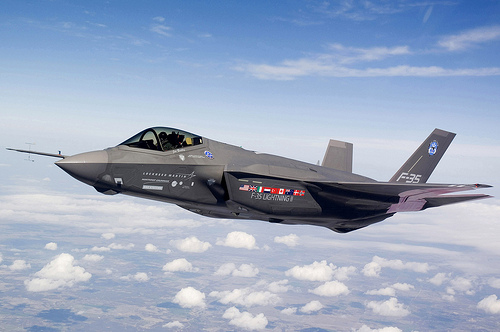Titanium 3D printing to be used on the Joint Strike Fighter
Sigma Labs inc. a company made up of Los Alamos researchers has just recieved a grant from the US Air Force Materials Research Laboratory to create a monitoring and control system for 3D printing titanium. Monitoring and control might seem boring but making 3D printing more precise, efficient and repeatable is exactly the kind of thing the technology needs in order to be used in actual manufacturing.
The system is to be used for the Joint Strike Fighter and will acording to CEO Richard Mah “create a quality-assured manufacturing process which will improve titanium”s utilization ratio by a factor of 5 or more, thereby saving millions of dollars in materials costs per aircraft – for military and civilian aircraft alike.” Â
So, this is no fanciful dream “oh won”t it be wonderful once everyone uses 3D printing to make tea cups.” This is a business decision to use 3D printing to save costs on what is one of the biggest US military procurement projects ever undertaken. Only a few weeks ago Roll Royce started a project to improve 3D printing so that it can be used to manufacture aircraft engines. There is also much more going behind the scenes since there are for example patents on 3D printing warheads.
The 3D printing process used for the Joint Strike Fighter parts is Electron Beam Melting. EBM is not the process we use to 3D print titanium, that is DMLS.  EBM machines are made by Arcam. With EBM a beam scans a bed of powder which is in a vacuum. Then all the contours of the part are melted by the beam and then the rest of the layer is melted. You can see a video of the process here. The link will open in your video player. The video is also quite possibly awesome. EBM is not widely used by 3D printing services but NASA and the US Air Force love the technology and are spending a lot of money researching it. EBM is also the technology NASA would like to use to 3D print moonbases.
There is currently a huge focus by the media on 3D printing in the consumer space. But, 3D printing in actual space, 3D printing patient specific inplants and other medical devices, 3D printing in manufacturing and 3D printing in aviation are all developing very quickly also. Welcome to a 3D printed world.
Image used under Creative Commons, Attribution mashleymorgan. Via Money.MSN.
Recommended Articles
No related posts.



